\n
Time-lapse videos have seen a resurgence in popularity lately and it is largely thanks to the capabilities of modern digital cameras. Combining the motion aspects of cinema with the high resolution capabilities of large imaging sensors, most current camera systems can easily meet the video resolution for HD videos and 4K, but as Los Angeles based photographer Joe Capra has just proven with a 10K time-lapse demo he created using the PhaseOne IQ180 medium format system, the limitations do not stop there.
\n
First inspired by a nature video from time-lapse filmmaker Tom Lowe, Capra had already been putting in the long hours it takes to capture landscapes at their most vibrant when he decided to piece together a homemade motion control system to assist him in supplemental footage that he could create at the same time.
\n
As part of a burgeoning scene of time-lapse photographers and filmmakers, he was soon helping to create videos like ‘Mission 26 – The Big Endeavour’, a time-lapse of the retired Space Shuttle Endeavour as it was led through the streets of LA to the California Science Center. In general, however, he prefers to work alone, as he will find himself spending several weeks to gather a variety of shots from difficult to access locations in extremely inclement weather to put together a film that often lasts only a few minutes. His first trips were self-funded and he spent several of those nights sleeping in his car, but with the viral success of videos like ‘Midnight Sun – Iceland’ (above) and ‘Two Lands – Greenland – Iceland – 4K’, he now finds himself being flown by commercial clients to create time-lapses in some of the most exotic locations around the world.
\n
Read more about Capra’s advice for time-lapse enthusiasts in our Q+A and slideshow. See his photography at his website Scientifantastic and you can find more of his videos at his Vimeo page.
\n”,”products”:[“canon_24_1p4_ii”,”canon_16-35_2p8_ii”,”nikon_14-24_2p8g”,”canon_70-200_2p8_is_ii”,”canon_24-70_2p8_ii”,”canon_eos5dmkiii”]},{“title”:”Scientifantastic – The Time-lapse and Landscape Work of Joe Capra”,”url”:”/articles/6968142012/scientifantastic-the-time-lapse-and-landscape-work-of-joe-capra?slide=2″,”imageUrl”:”http://1.static.img-dpreview.com/files/p/E~TS590x394~articles/6968142012/Icelandic_Horse.jpeg”,”imageWidth”:590,”imageHeight”:394,”thumbnailUrl”:”http://2.static.img-dpreview.com/files/p/E~TS120x80~articles/6968142012/Icelandic_Horse.jpeg”,”thumbnailWidth”:120,”thumbnailHeight”:80,”originalUrl”:”http://3.static.img-dpreview.com/files/p/articles/6968142012/Icelandic_Horse.jpeg”,”originalWidth”:1000,”originalHeight”:667,”contentHtml”:”\n\n
Icelandic Horse by Joe Capra Scientifantastic
\n
In comparison to traditional HD and 4K, what was the experience of shooting medium-format time-lapse with the PhaseOne IQ180 like? How did you manage sequencing such huge files, 80 megapixels at dimensions of 10,328×7760, and what were your processing needs like? How do you even monitor the footage at 10k?
\n
Shooting with the 80 megapixel PhaseOne IQ180 was not much different than shooting with a regular DSLR. The only problem I had, which was a major one, was that the camera would shut off randomly on occasion. I still have not been able to figure out why it did that. Having a camera shut off during an hour long timelapse shot is not something you want to happen as you might imagine. I don’t fault the manufacturer in any way because these camera were not designed to take a photo every couple seconds continuously for an hour or more.
\n”,”products”:[“canon_24_1p4_ii”,”canon_16-35_2p8_ii”,”nikon_14-24_2p8g”,”canon_70-200_2p8_is_ii”,”canon_24-70_2p8_ii”,”canon_eos5dmkiii”]},{“title”:”Scientifantastic – The Time-lapse and Landscape Work of Joe Capra”,”url”:”/articles/6968142012/scientifantastic-the-time-lapse-and-landscape-work-of-joe-capra?slide=3″,”imageUrl”:”http://3.static.img-dpreview.com/files/p/E~TS590x394~articles/6968142012/Bristlecone_Milky_Way_Meteor.jpeg”,”imageWidth”:590,”imageHeight”:394,”thumbnailUrl”:”http://2.static.img-dpreview.com/files/p/E~TS120x80~articles/6968142012/Bristlecone_Milky_Way_Meteor.jpeg”,”thumbnailWidth”:120,”thumbnailHeight”:80,”originalUrl”:”http://1.static.img-dpreview.com/files/p/articles/6968142012/Bristlecone_Milky_Way_Meteor.jpeg”,”originalWidth”:1000,”originalHeight”:667,”contentHtml”:”\n\n
Bristlecone Milky Way Meteor by Joe Capra Scientifantastic
\n
(cont.) The post processing workflow for the PhaseOne was no different than my normal workflow. However, the shots did take about twice as long to render out and also required much more hard drive storage. My normal time-lapse workflow goes something like this…
\n
I import the raw files into Adobe Lightroom where I first organize all the shots into their own folders. Next I color correct and process all the shots in Lightroom’s develop module and save out the metadata. Some shots, mainly day-to-night and night-to-day shots, require a little more post processing in a program called LRTimelapse ( lrtimelapse.com). LRTimelapse allows you to fade, animate and tween (*generate intermediate frames) raw adjustment over the full length of the shot.
\n”,”products”:[“canon_24_1p4_ii”,”canon_16-35_2p8_ii”,”nikon_14-24_2p8g”,”canon_70-200_2p8_is_ii”,”canon_24-70_2p8_ii”,”canon_eos5dmkiii”]},{“title”:”Scientifantastic – The Time-lapse and Landscape Work of Joe Capra”,”url”:”/articles/6968142012/scientifantastic-the-time-lapse-and-landscape-work-of-joe-capra?slide=4″,”imageUrl”:”http://2.static.img-dpreview.com/files/p/E~TS590x394~articles/6968142012/Dubai.jpeg”,”imageWidth”:590,”imageHeight”:394,”thumbnailUrl”:”http://1.static.img-dpreview.com/files/p/E~TS120x80~articles/6968142012/Dubai.jpeg”,”thumbnailWidth”:120,”thumbnailHeight”:80,”originalUrl”:”http://2.static.img-dpreview.com/files/p/articles/6968142012/Dubai.jpeg”,”originalWidth”:1000,”originalHeight”:667,”contentHtml”:”\n\n
Dubai by Joe Capra Scientifantastic
\n
(cont.) For example, with a day-to-night shot, the white balance changes from day to night. By the end of the shot the white balance will be completely off, so to fix this I run the shot through LRTimelapse. I adjust the white balance of the first and last image in the shot and then the program smoothly changes the white balance for all the shots in between.
\n
The program can do this to almost every raw adjustment available in Lightroom or ACR. Since no 10K monitors exist there is no way to watch the footage at its full resolution, but watching it at full resolution is not required. There are some 8K televisions out there now, but they are extremely expensive. Watching this footage on an 8K tv or monitor would be amazing. Hopefully one of these days I will be able to watch the footage at its full 10K resolution.
\n”,”products”:[“canon_24_1p4_ii”,”canon_16-35_2p8_ii”,”nikon_14-24_2p8g”,”canon_70-200_2p8_is_ii”,”canon_24-70_2p8_ii”,”canon_eos5dmkiii”]},{“title”:”Scientifantastic – The Time-lapse and Landscape Work of Joe Capra”,”url”:”/articles/6968142012/scientifantastic-the-time-lapse-and-landscape-work-of-joe-capra?slide=5″,”imageUrl”:”http://4.static.img-dpreview.com/files/p/E~TS590x392~articles/6968142012/Boats_Marina_Del_Rey.jpeg”,”imageWidth”:590,”imageHeight”:392,”thumbnailUrl”:”http://1.static.img-dpreview.com/files/p/E~TS120x80~articles/6968142012/Boats_Marina_Del_Rey.jpeg”,”thumbnailWidth”:120,”thumbnailHeight”:80,”originalUrl”:”http://2.static.img-dpreview.com/files/p/articles/6968142012/Boats_Marina_Del_Rey.jpeg”,”originalWidth”:1000,”originalHeight”:665,”contentHtml”:”\n\n
Boats Marina Del Rey by Joe Capra Scientifantastic
\n
In general, the time-lapse community is fairly tight and helpful with each other, do you recommend the work of any other artists in particular? What are a few of your favorite resources for learning and experimenting with time-lapse?
\n
The time-lapse community is very tight and we all hang out, shoot together, and help each other out. There are a lot of really amazing time-lapse shooters out there that I could name, but the list would be huge. Some of my favorites are my good friends Jeff Frost, Colin Rich, Shawn Reeder, Andrew Walker, Eric Hines, Christ Pritchard, Drew Geraci, Ben Carnales, Matt Givot, Tom Lowe, Josh Owens, Dustin Kukuk, Henry Jun Wah Lee, Enrique Pacheco, Dustin Farrell and more. I am sure I missed some people so please forgive me.
\n
The forums at Timescapes.org are an amazing resource for all things time-lapse. It’s a great community of time-lapse shooters from around the world who all help each other out with anything time-lapse related. There are also some great articles online, video tutorials, and books about shooting time-lapse. If you are looking to get into time-lapse I would visit the timescapes.org forums first, then take your camera outside and just start shooting and practicing. There is no better way to learn time-lapse than to just go out and try it, practice, fail, and try again.
\n”,”products”:[“canon_24_1p4_ii”,”canon_16-35_2p8_ii”,”nikon_14-24_2p8g”,”canon_70-200_2p8_is_ii”,”canon_24-70_2p8_ii”,”canon_eos5dmkiii”]},{“title”:”Scientifantastic – The Time-lapse and Landscape Work of Joe Capra”,”url”:”/articles/6968142012/scientifantastic-the-time-lapse-and-landscape-work-of-joe-capra?slide=6″,”imageUrl”:”http://1.static.img-dpreview.com/files/p/E~TS590x372~articles/6968142012/_Joe_Capra_Gear_shot.jpeg”,”imageWidth”:590,”imageHeight”:372,”thumbnailUrl”:”http://1.static.img-dpreview.com/files/p/E~TS120x76~articles/6968142012/_Joe_Capra_Gear_shot.jpeg”,”thumbnailWidth”:120,”thumbnailHeight”:76,”originalUrl”:”http://3.static.img-dpreview.com/files/p/articles/6968142012/_Joe_Capra_Gear_shot.jpeg”,”originalWidth”:1000,”originalHeight”:630,”contentHtml”:”\n\n
Joe Capra’s gear
\n
Cameras and Lenses:
\n
\n
- 3 x Canon 5D Mark III cameras
\n
- 16-35mm f2.8 L
\n
- 24mm f1.4 L
\n
- 24-70mm (version 1 and 2) f2.8 L
\n
- 24-105mm f4 IS L
\n
- 70-200mm f2.8 IS L
\n
- Nikon 14-24mm f2.8G ED
\n
\n
Timelapse Gear:
\n
\n
- Kessler Crane 5’ CineSlider
\n
- Kessler Crane Second Shooter
\n
- Kessler Crane Outrigger feet
\n
- Dynamic Perception Stage R pan/tilt unit
\n
- Dynamic Perception Stage 0 Slider
\n
- Dynamic Perception Stage 1 Slider
\n
- Dynamic Perception MX3 and MX2 controllers
\n
- Emotimo TB3
\n
- Various intervalometers
\n
- Little Bramper bulb ramper
\n
- RamperPro bulb/exposure ramper
\n
\n
Tripods and Support Accessories:
\n
\n
- 2 x Slik Pro 823 CFL Carbon Tripods
\n
- 1 Gitzo 3541L Tripod
\n
- Manfrotto MT055XPRO3 Tripod
\n
- Manfrotto 294 Tripod
\n
- Ballheads and mounting:
\n
- Really Right Stuff BH55 ballhead
\n
- 2 x Really Right Stuff BH40 ballheads
\n
- Really Right Stuff camera plates, quick release clamps, brackets
\n
- 3 x Manfrotto 498RC2 Ballheads
\n
- Camera Bags:
\n
- Gura Gear Bataflae 32L
\n
- Gura Gear Chobe
\n
\n”,”products”:[“canon_24_1p4_ii”,”canon_16-35_2p8_ii”,”nikon_14-24_2p8g”,”canon_70-200_2p8_is_ii”,”canon_24-70_2p8_ii”,”canon_eos5dmkiii”]},{“title”:”Scientifantastic – The Time-lapse and Landscape Work of Joe Capra”,”url”:”/articles/6968142012/scientifantastic-the-time-lapse-and-landscape-work-of-joe-capra?slide=7″,”imageUrl”:”http://4.static.img-dpreview.com/files/p/E~TS590x394~articles/6968142012/We_Are_Listening.jpeg”,”imageWidth”:590,”imageHeight”:394,”thumbnailUrl”:”http://1.static.img-dpreview.com/files/p/E~TS120x80~articles/6968142012/We_Are_Listening.jpeg”,”thumbnailWidth”:120,”thumbnailHeight”:80,”originalUrl”:”http://4.static.img-dpreview.com/files/p/articles/6968142012/We_Are_Listening.jpeg”,”originalWidth”:1000,”originalHeight”:667,”contentHtml”:”\n\n
We Are Listening by Joe Capra Scientifantastic
\n
Would you explain the name that you shoot under, “Scientifantastic”? Which Tom Lowe video got you started with time-lapse and landscape work and what was it about the medium of time-lapse that called to you?
\n
I can’t seem to find Tom’s old videos that got me interested in shooting time-lapse. I remember watching some of his videos many years ago and was completely blown away by them. At that time there was no commercially available motion control gear available so you had to make all the gear yourself. I remember seeing a picture of Tom’s time-lapse dolly he had made and thought to myself that there is no way I was going to be able to make something like that. So I kind of put time-lapse on the backburner for maybe a year.
\n
In that time, Tom kept putting out more videos which kept reigniting my desire to shoot time-lapse. One day I made the decision that I am going to build a time-lapse motion control system, no matter what, and I did. I think my original homemade dolly cost around $2500.
\n”,”products”:[“canon_24_1p4_ii”,”canon_16-35_2p8_ii”,”nikon_14-24_2p8g”,”canon_70-200_2p8_is_ii”,”canon_24-70_2p8_ii”,”canon_eos5dmkiii”]},{“title”:”Scientifantastic – The Time-lapse and Landscape Work of Joe Capra”,”url”:”/articles/6968142012/scientifantastic-the-time-lapse-and-landscape-work-of-joe-capra?slide=8″,”imageUrl”:”http://2.static.img-dpreview.com/files/p/E~TS590x291~articles/6968142012/Wind_Farm.jpeg”,”imageWidth”:590,”imageHeight”:291,”thumbnailUrl”:”http://1.static.img-dpreview.com/files/p/E~TS120x59~articles/6968142012/Wind_Farm.jpeg”,”thumbnailWidth”:120,”thumbnailHeight”:59,”originalUrl”:”http://2.static.img-dpreview.com/files/p/articles/6968142012/Wind_Farm.jpeg”,”originalWidth”:1000,”originalHeight”:494,”contentHtml”:”\n\n
Wind Farm by Joe Capra Scientifantastic
\n
(cont.) Time-lapse really appealed to me because it was a way to capture the unseen motion that surrounds us every day. Clouds moving, stars moving around the sky, shadow movement, and the flow of people and traffic are all things that we are not able to perceive with the naked eye and time-lapse allows us to see and capture it. I had been shooting strictly still images before getting into time-lapse so I was already out-and-about shooting landscapes, so time-lapse was the perfect fit… The name “Scientifantastic” comes from the lyrics of an old punk band called Karp. Once I heard the word it just stuck with me and I decided to use the name for my company.
\n”,”products”:[“canon_24_1p4_ii”,”canon_16-35_2p8_ii”,”nikon_14-24_2p8g”,”canon_70-200_2p8_is_ii”,”canon_24-70_2p8_ii”,”canon_eos5dmkiii”]},{“title”:”Scientifantastic – The Time-lapse and Landscape Work of Joe Capra”,”url”:”/articles/6968142012/scientifantastic-the-time-lapse-and-landscape-work-of-joe-capra?slide=9″,”imageUrl”:”http://2.static.img-dpreview.com/files/p/E~TS589x442~articles/6968142012/Flying_High_Over_Dubai.jpeg”,”imageWidth”:589,”imageHeight”:442,”thumbnailUrl”:”http://2.static.img-dpreview.com/files/p/E~TS120x90~articles/6968142012/Flying_High_Over_Dubai.jpeg”,”thumbnailWidth”:120,”thumbnailHeight”:90,”originalUrl”:”http://2.static.img-dpreview.com/files/p/articles/6968142012/Flying_High_Over_Dubai.jpeg”,”originalWidth”:1000,”originalHeight”:750,”contentHtml”:”\n\n
Flying High Over Dubai by Joe Capra Scientifantastic
\n
Have things changed for you now that you have a budget? For personal projects, how do you choose and plan ahead for your locations? From helicopter shots to extremely remote locations, how are you able to gain access to locations so few have seen?
\n
The only thing that has really changed is that instead of self-funding my own trips I have been lucky enough to have all my adventures paid for by clients. As far as the work itself and shooting goes, I am still a one-man-band. I carry all my own gear out to locations, sleep in cars and tents, sometimes get no sleep for days, sometimes don’t eat for a day, and spend hours on end at the computer rendering and editing footage. I do everything myself without any assistants.
\n
Unlike jobs for clients, I can choose where I want to go for my personal projects. I am still obsessed with the Arctic and Antarctic regions. There is just something so amazing about these remote places so I usually end up in one of the Arctic/Antarctic regions. I usually do all the planning and logistics for my own personal projects as well as projects for clients.
\n”,”products”:[“canon_24_1p4_ii”,”canon_16-35_2p8_ii”,”nikon_14-24_2p8g”,”canon_70-200_2p8_is_ii”,”canon_24-70_2p8_ii”,”canon_eos5dmkiii”]},{“title”:”Scientifantastic – The Time-lapse and Landscape Work of Joe Capra”,”url”:”/articles/6968142012/scientifantastic-the-time-lapse-and-landscape-work-of-joe-capra?slide=10″,”imageUrl”:”http://2.static.img-dpreview.com/files/p/E~TS590x315~articles/6968142012/Mono_Lake_Soundwave.jpeg”,”imageWidth”:590,”imageHeight”:315,”thumbnailUrl”:”http://4.static.img-dpreview.com/files/p/E~TS120x64~articles/6968142012/Mono_Lake_Soundwave.jpeg”,”thumbnailWidth”:120,”thumbnailHeight”:64,”originalUrl”:”http://1.static.img-dpreview.com/files/p/articles/6968142012/Mono_Lake_Soundwave.jpeg”,”originalWidth”:1000,”originalHeight”:534,”contentHtml”:”\n\n
Mono Lake Soundwave by Joe Capra Scientifantastic
\n
(cont.) I use Google Maps and Google Earth for most of my planning and to choose shooting locations. I also use a few iPhone apps for information about moon/sunrise/set times and positions. I am very meticulous with my planning for all my shoots. I want to arrive at the location knowing as much as possible so as not to waste any time. Getting access to a lot of places is fairly easy. You just need to ask for permission. Some people are tough to deal with and refuse you access, but most people are willing to give you access once they know (and see) what you will be doing.
\n”,”products”:[“canon_24_1p4_ii”,”canon_16-35_2p8_ii”,”nikon_14-24_2p8g”,”canon_70-200_2p8_is_ii”,”canon_24-70_2p8_ii”,”canon_eos5dmkiii”]},{“title”:”Scientifantastic – The Time-lapse and Landscape Work of Joe Capra”,”url”:”/articles/6968142012/scientifantastic-the-time-lapse-and-landscape-work-of-joe-capra?slide=11″,”imageUrl”:”http://3.static.img-dpreview.com/files/p/E~TS590x427~articles/6968142012/Horses_Iceland.jpeg”,”imageWidth”:590,”imageHeight”:427,”thumbnailUrl”:”http://4.static.img-dpreview.com/files/p/E~TS120x87~articles/6968142012/Horses_Iceland.jpeg”,”thumbnailWidth”:120,”thumbnailHeight”:87,”originalUrl”:”http://2.static.img-dpreview.com/files/p/articles/6968142012/Horses_Iceland.jpeg”,”originalWidth”:1000,”originalHeight”:723,”contentHtml”:”\n\n
Horses Iceland by Joe Capra Scientifantastic
\n
When you’re looking to build the “story” of a location, what are the shots that you are looking for? How do you decide camera movements and what is the gear that you use to execute them?
\n
I usually have some sort of story outline when I am going into a project, but the final product is usually a good bit different from what I had outlined. Things don’t always go as planned. Weather, nature, the environment, logistical problems, shooting permits, camera problems and things like that always derail you from your outlined plan. I just go with the flow and let nature tell its own story. The unexpected shots many times work out much better than the planned shots. The scene itself dictates the camera movements, if any.
\n”,”products”:[“canon_24_1p4_ii”,”canon_16-35_2p8_ii”,”nikon_14-24_2p8g”,”canon_70-200_2p8_is_ii”,”canon_24-70_2p8_ii”,”canon_eos5dmkiii”]},{“title”:”Scientifantastic – The Time-lapse and Landscape Work of Joe Capra”,”url”:”/articles/6968142012/scientifantastic-the-time-lapse-and-landscape-work-of-joe-capra?slide=12″,”imageUrl”:”http://2.static.img-dpreview.com/files/p/E~TS295x442~articles/6968142012/Yosemite_Firefall.jpeg”,”imageWidth”:295,”imageHeight”:442,”thumbnailUrl”:”http://4.static.img-dpreview.com/files/p/E~TS120x180~articles/6968142012/Yosemite_Firefall.jpeg”,”thumbnailWidth”:120,”thumbnailHeight”:180,”originalUrl”:”http://4.static.img-dpreview.com/files/p/articles/6968142012/Yosemite_Firefall.jpeg”,”originalWidth”:667,”originalHeight”:1000,”contentHtml”:”\n\n
Yosemite Firefall by Joe Capra Scientifantastic
\n
(cont.) When I get to the shooting location I first scout out the area looking for the best shots. Sometimes a dolly shot will work best, and sometimes a static locked-off shot will work. I try to reserve camera movements for shots where the movement adds something to the story and try not to move the camera just for the sake of adding movement. There has to be a purpose behind the camera move. I use many different devices to move the camera along a dolly track and/or to pan or tilt the camera.
\n
My current motion control time-lapse gear is the Kessler Crane “Second Shooter” and 5’ CineSlider. I also use a lot of gear made by Dynamic Perception including the “Stage R”, “Stage 0”, and “Stage 1” motion control rigs.
\n”,”products”:[“canon_24_1p4_ii”,”canon_16-35_2p8_ii”,”nikon_14-24_2p8g”,”canon_70-200_2p8_is_ii”,”canon_24-70_2p8_ii”,”canon_eos5dmkiii”]},{“title”:”Scientifantastic – The Time-lapse and Landscape Work of Joe Capra”,”url”:”/articles/6968142012/scientifantastic-the-time-lapse-and-landscape-work-of-joe-capra?slide=13″,”imageUrl”:”http://2.static.img-dpreview.com/files/p/E~TS590x291~articles/6968142012/Wind_Farm.jpeg”,”imageWidth”:590,”imageHeight”:291,”thumbnailUrl”:”http://1.static.img-dpreview.com/files/p/E~TS120x59~articles/6968142012/Wind_Farm.jpeg”,”thumbnailWidth”:120,”thumbnailHeight”:59,”originalUrl”:”http://2.static.img-dpreview.com/files/p/articles/6968142012/Wind_Farm.jpeg”,”originalWidth”:1000,”originalHeight”:494,”contentHtml”:”\n\n
Wind Farm by Joe Capra Scientifantastic
\n
Whether time-lapse, video of film, bad audio will absolutely ruin a project. What are your considerations for choosing the soundtrack to each project?
\n
Audio is a very tough thing for me. The music for a time-lapse or film really makes or breaks it. I usually try to find something that has the same pacing as I want in the final video. One of the most important things I have found when choosing music for a project is that you can’t just look to music you like. You have to choose something that will appeal to the general public. I usually find a few tracks and make quick edits to them to see they will work with the visuals. You can find what you think is the perfect song, but when you throw it into an edit with the visuals it just may not work.
\n
To me, music is one of the hardest parts of the job. Once you do find the perfect music you also have to license it, which doesn’t always work out. Sometimes the artist’s fee is very expensive, and sometimes they just don’t want to let you use the music. Licensing can be very tough, especially for personal projects where there is little to no budget and everything comes out of my own pocket.
\n”,”products”:[“canon_24_1p4_ii”,”canon_16-35_2p8_ii”,”nikon_14-24_2p8g”,”canon_70-200_2p8_is_ii”,”canon_24-70_2p8_ii”,”canon_eos5dmkiii”]},{“title”:”Scientifantastic – The Time-lapse and Landscape Work of Joe Capra”,”url”:”/articles/6968142012/scientifantastic-the-time-lapse-and-landscape-work-of-joe-capra?slide=14″,”imageUrl”:”http://3.static.img-dpreview.com/files/p/E~TS590x386~articles/6968142012/Rocinha_Favela_Rio.jpeg”,”imageWidth”:590,”imageHeight”:386,”thumbnailUrl”:”http://1.static.img-dpreview.com/files/p/E~TS120x79~articles/6968142012/Rocinha_Favela_Rio.jpeg”,”thumbnailWidth”:120,”thumbnailHeight”:79,”originalUrl”:”http://4.static.img-dpreview.com/files/p/articles/6968142012/Rocinha_Favela_Rio.jpeg”,”originalWidth”:1000,”originalHeight”:655,”contentHtml”:”\n\n
Rocinha Favela Rio by Joe Capra Scientifantastic
\n
What are your favored lenses for working with time-lapse? For photographers interested in time-lapse, what are the absolutely essential pieces of equipment?
\n
I use a wide array of lenses for shooting time-lapse, and the scene really dictates the lens I use. I find myself using my Nikon 14-24mm f/2.8, Canon 24-70mm f/2.8, and my Canon 16-35mm f/2.8 lenses the most. To get into time-lapse, all you really need is a camera, tripod, and an intervalometer. An intervalometer is a little remote control that you plug into the camera that allows you to trigger the camera at a specified interval. Some cameras have these built-in but others require a separate device.
\n
Once you get more advanced, you can start looking into motion control gear to add movements to your shots. You will also need a few extra memory cards, as well, since you will be shooting hundreds or thousands of images during a session. Time-lapse shots can take anywhere from 10 minutes to 10 hours or more.
\n”,”products”:[“canon_24_1p4_ii”,”canon_16-35_2p8_ii”,”nikon_14-24_2p8g”,”canon_70-200_2p8_is_ii”,”canon_24-70_2p8_ii”,”canon_eos5dmkiii”]},{“title”:”Scientifantastic – The Time-lapse and Landscape Work of Joe Capra”,”url”:”/articles/6968142012/scientifantastic-the-time-lapse-and-landscape-work-of-joe-capra?slide=15″,”imageUrl”:”http://4.static.img-dpreview.com/files/p/E~TS590x332~articles/6968142012/Penguin_Antarctica.jpeg”,”imageWidth”:590,”imageHeight”:332,”thumbnailUrl”:”http://4.static.img-dpreview.com/files/p/E~TS120x67~articles/6968142012/Penguin_Antarctica.jpeg”,”thumbnailWidth”:120,”thumbnailHeight”:67,”originalUrl”:”http://4.static.img-dpreview.com/files/p/articles/6968142012/Penguin_Antarctica.jpeg”,”originalWidth”:1000,”originalHeight”:562,”contentHtml”:”\n\n
Penguin Antarctica by Joe Capra Scientifantastic
\n
Considering the amount of images needed for a single time-lapse shot, what do you do when you may find yourself far-removed from accommodations like power and Internet?
\n
Shots in the daytime can be done very quickly, but shots at night require much more waiting around time. There are no shortage of things to do while you wait for your shot(s) to complete. Most of the time I am out shooting in nature or some other cool location so all I really need to do it just sit back and enjoy nature and the scenery. Sometimes I will go hiking around the area scouting out new shot locations, or sleep, cook some food on the camping stove, import and backup footage on the laptop and play games on my phone. There are usually plenty of things to do while shots are running.
\n
Things get a little harder when you are shooting in a densely populated area such as a major city. You constantly have to be on your toes in the city. People can accidentally kick your tripod; you will constantly be asked questions by people walking by; police may give you a hard time; you might get robbed; there are all kinds of things that can go wrong in the city. That’s why I love shooting in remote places so much.
\n”,”products”:[“canon_24_1p4_ii”,”canon_16-35_2p8_ii”,”nikon_14-24_2p8g”,”canon_70-200_2p8_is_ii”,”canon_24-70_2p8_ii”,”canon_eos5dmkiii”]},{“title”:”Scientifantastic – The Time-lapse and Landscape Work of Joe Capra”,”url”:”/articles/6968142012/scientifantastic-the-time-lapse-and-landscape-work-of-joe-capra?slide=16″,”imageUrl”:”http://2.static.img-dpreview.com/files/p/E~TS590x323~articles/6968142012/Gold_Coast_Sunrise.jpeg”,”imageWidth”:590,”imageHeight”:323,”thumbnailUrl”:”http://1.static.img-dpreview.com/files/p/E~TS120x66~articles/6968142012/Gold_Coast_Sunrise.jpeg”,”thumbnailWidth”:120,”thumbnailHeight”:66,”originalUrl”:”http://2.static.img-dpreview.com/files/p/articles/6968142012/Gold_Coast_Sunrise.jpeg”,”originalWidth”:1000,”originalHeight”:547,”contentHtml”:”\n\n
Gold Coast Sunrise by Joe Capra Scientifantastic
\n
Any suggestions in terms of frame rate and exposure or do these decisions depend more on the project, shot and location for you?
\n
Frame rate is very important when shooting time-lapse. Usually you will want to shoot with a 24fps frame rate in mind and your shot as a final video clip should be about 10 seconds long. For example, to get a 10 second time-lapse clip you will need to shoot 240 frames (10 seconds x 24fps = 240 frames required). If you shoot a frame every 10 seconds it will take you 40 minutes to complete the shot.
\n
Since you are shooting image sequences you could play the shot back at any frame rate you want, but it will affect the look of the time-lapse clip and also its playback length. Exposure is something that is dictated by the scene itself so there is no general rule there.
\n”,”products”:[“canon_24_1p4_ii”,”canon_16-35_2p8_ii”,”nikon_14-24_2p8g”,”canon_70-200_2p8_is_ii”,”canon_24-70_2p8_ii”,”canon_eos5dmkiii”]},{“title”:”Scientifantastic – The Time-lapse and Landscape Work of Joe Capra”,”url”:”/articles/6968142012/scientifantastic-the-time-lapse-and-landscape-work-of-joe-capra?slide=17″,”imageUrl”:”http://2.static.img-dpreview.com/files/p/E~TS590x382~articles/6968142012/Midnight_Sun_Iceland.jpeg”,”imageWidth”:590,”imageHeight”:382,”thumbnailUrl”:”http://3.static.img-dpreview.com/files/p/E~TS120x78~articles/6968142012/Midnight_Sun_Iceland.jpeg”,”thumbnailWidth”:120,”thumbnailHeight”:78,”originalUrl”:”http://3.static.img-dpreview.com/files/p/articles/6968142012/Midnight_Sun_Iceland.jpeg”,”originalWidth”:1000,”originalHeight”:647,”contentHtml”:”\n\n
Midnight Sun Iceland by Joe Capra Scientifantastic
\n
Outside of gear, what are a few time-lapse techniques that beginning artists should be aware of?
\n
Everyone will come up with a workflow that works best for them, but I can offer a couple tips. The first is to be organized! When dealing with thousands of images, you want to make sure everything is as organized as possible. Secondly, backup your work! Time-lapse can take an enormous amount of time and effort. The last thing you want to do is lose all your work. Finally, you need to make sure you have enough hard drive space. Shooting thousands of images, especially raw, can take up a lot of space. Make sure you have enough hard drive space for your raw files and a backup of those files as well as the final output as a movie clip.
\n”,”products”:[“canon_24_1p4_ii”,”canon_16-35_2p8_ii”,”nikon_14-24_2p8g”,”canon_70-200_2p8_is_ii”,”canon_24-70_2p8_ii”,”canon_eos5dmkiii”]},{“title”:”Scientifantastic – The Time-lapse and Landscape Work of Joe Capra”,”url”:”/articles/6968142012/scientifantastic-the-time-lapse-and-landscape-work-of-joe-capra?slide=18″,”imageUrl”:”http://3.static.img-dpreview.com/files/p/E~TS590x394~articles/6968142012/Iguazu_Falls.jpeg”,”imageWidth”:590,”imageHeight”:394,”thumbnailUrl”:”http://2.static.img-dpreview.com/files/p/E~TS120x80~articles/6968142012/Iguazu_Falls.jpeg”,”thumbnailWidth”:120,”thumbnailHeight”:80,”originalUrl”:”http://1.static.img-dpreview.com/files/p/articles/6968142012/Iguazu_Falls.jpeg”,”originalWidth”:1000,”originalHeight”:667,”contentHtml”:”\n\n
Iguazu Falls by Joe Capra Scientifantastic
\n
(cont.) Beginners should be aware of, and know how, to avoid flicker in their time-lapse shots. Flicker is caused by your camera’s aperture not always stopping down to the exact same size for every shot. This does not really matter for still photography but the result during a time-lapse is multiple frames that are slightly brighter or darker than all the rest of the frames in the sequence. Flicker can also be caused by shooting in Av or Aperture Priority mode.
\n
When shooting in Av mode the camera has to meter the scene for every frame, and it is not always consistent. The result is multiple frames with slightly different exposures which will cause flickering in the final video. The flickering can be removed in post using various plugins and programs, but it’s best to get it right in-camera.
\n
First thing you should do to avoid flicker is to always shoot in M or manual mode. Another way to avoid flicker is called the “lens twist” method. This is when you press the depth of field preview button on your camera to stop down the aperture while at the same time ever so slightly twisting the lens off the body to break the contact between the lens and the camera. This basically locks the aperture in place at its specified F stop and will eliminate the flicker. If that sounds scary to you then just stick with shooting in M mode.
\n”,”products”:[“canon_24_1p4_ii”,”canon_16-35_2p8_ii”,”nikon_14-24_2p8g”,”canon_70-200_2p8_is_ii”,”canon_24-70_2p8_ii”,”canon_eos5dmkiii”]},{“title”:”Scientifantastic – The Time-lapse and Landscape Work of Joe Capra”,”url”:”/articles/6968142012/scientifantastic-the-time-lapse-and-landscape-work-of-joe-capra?slide=19″,”imageUrl”:”http://2.static.img-dpreview.com/files/p/E~TS590x394~articles/6968142012/Greenlandic_Huskies.jpeg”,”imageWidth”:590,”imageHeight”:394,”thumbnailUrl”:”http://1.static.img-dpreview.com/files/p/E~TS120x80~articles/6968142012/Greenlandic_Huskies.jpeg”,”thumbnailWidth”:120,”thumbnailHeight”:80,”originalUrl”:”http://2.static.img-dpreview.com/files/p/articles/6968142012/Greenlandic_Huskies.jpeg”,”originalWidth”:1000,”originalHeight”:667,”contentHtml”:”\n\n
Greenlandic Huskies by Joe Capra Scientifantastic
\n
As someone who is very active on social media, are there any other ways in which you market your work? How has it been for you to work with digital media venues and do you recommend any other outlets?
\n
I think social media is the best place to market your work, however I do not really use it as a “marketing” tool. I just like to share cool photos, cool locations, behind-the-scenes photos and things that I like with my followers. I don’t try to traditionally “market” myself or my work on social media and actually do not do any form of marketing. The closest thing to traditional marketing I have done was experimenting with Facebook and Twitter ads out of curiosity.
\n”,”products”:[“canon_24_1p4_ii”,”canon_16-35_2p8_ii”,”nikon_14-24_2p8g”,”canon_70-200_2p8_is_ii”,”canon_24-70_2p8_ii”,”canon_eos5dmkiii”]},{“title”:”Scientifantastic – The Time-lapse and Landscape Work of Joe Capra”,”url”:”/articles/6968142012/scientifantastic-the-time-lapse-and-landscape-work-of-joe-capra?slide=20″,”imageUrl”:”http://3.static.img-dpreview.com/files/p/E~TS590x394~articles/6968142012/LAX_Travelers.jpeg”,”imageWidth”:590,”imageHeight”:394,”thumbnailUrl”:”http://2.static.img-dpreview.com/files/p/E~TS120x80~articles/6968142012/LAX_Travelers.jpeg”,”thumbnailWidth”:120,”thumbnailHeight”:80,”originalUrl”:”http://1.static.img-dpreview.com/files/p/articles/6968142012/LAX_Travelers.jpeg”,”originalWidth”:1000,”originalHeight”:667,”contentHtml”:”\n\n
LAX Travelers by Joe Capra Scientifantastic
\n
That said, social media has been a tremendous help to me in my career. I try to let my work speak for and market itself. If it’s good people will usually share it. I have not worked directly with iTunes but places like Vimeo, Youtube, and 500px.com are great places to show your work.
“,”products”:[“canon_24_1p4_ii”,”canon_16-35_2p8_ii”,”nikon_14-24_2p8g”,”canon_70-200_2p8_is_ii”,”canon_24-70_2p8_ii”,”canon_eos5dmkiii”]}],”currentSlideIndex”:0,”slideshowWidth”:590,”slideshowHeight”:442,”disableImageZoomInSlideshow”:false,”fullContent”:”TODO”});
});
Scientifantastic – The Time-lapse and Landscape Work of Joe Capra
Time-lapse videos have seen a resurgence in popularity lately and it is largely thanks to the capabilities of modern digital cameras. Combining the motion aspects of cinema with the high resolution capabilities of large imaging sensors, most current camera systems can easily meet the video resolution for HD videos and 4K, but as Los Angeles based photographer Joe Capra has just proven with a 10K time-lapse demo he created using the PhaseOne IQ180 medium format system, the limitations do not stop there.
First inspired by a nature video from time-lapse filmmaker Tom Lowe, Capra (pictured above in Greenland) had already been putting in the long hours it takes to capture landscapes at their most vibrant when he decided to piece together a homemade motion control system to assist him in supplemental footage that he could create at the same time.
Time-lapse videos have seen a resurgence in popularity lately and it is largely thanks to the capabilities of modern digital cameras. Combining the motion aspects of cinema with the high resolution capabilities of large imaging sensors, most current camera systems can easily meet the video resolution for HD videos and 4K, but as Los Angeles based photographer Joe Capra has just proven with a 10K time-lapse demo he created using the PhaseOne IQ180 medium format system, the limitations do not stop there.
First inspired by a nature video from time-lapse filmmaker Tom Lowe, Capra had already been putting in the long hours it takes to capture landscapes at their most vibrant when he decided to piece together a homemade motion control system to assist him in supplemental footage that he could create at the same time.
As part of a burgeoning scene of time-lapse photographers and filmmakers, he was soon helping to create videos like ‘Mission 26 – The Big Endeavour’, a time-lapse of the retired Space Shuttle Endeavour as it was led through the streets of LA to the California Science Center. In general, however, he prefers to work alone, as he will find himself spending several weeks to gather a variety of shots from difficult to access locations in extremely inclement weather to put together a film that often lasts only a few minutes. His first trips were self-funded and he spent several of those nights sleeping in his car, but with the viral success of videos like ‘Midnight Sun – Iceland’ (above) and ‘Two Lands – Greenland – Iceland – 4K’, he now finds himself being flown by commercial clients to create time-lapses in some of the most exotic locations around the world.
Read more about Capra’s advice for time-lapse enthusiasts in our Q+A and slideshow. See his photography at his website Scientifantastic and you can find more of his videos at his Vimeo page.

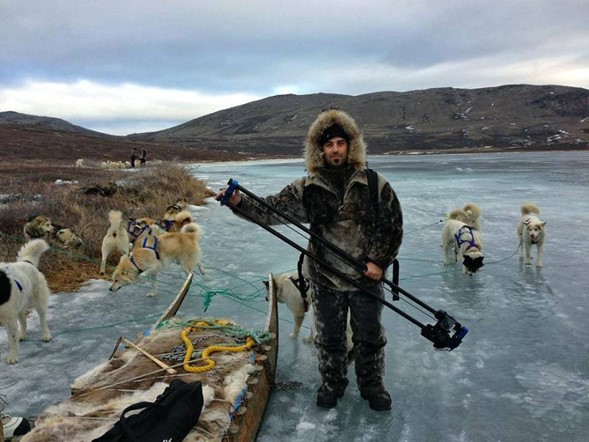










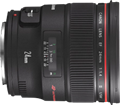





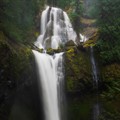
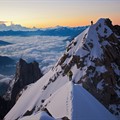
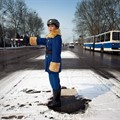
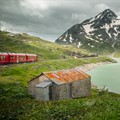
 Started out doing photography at the age of 6 using an uncle's old 1940 kodak brownie box camera. At 15 years of age, I decided to buy my very own 1975 Praktica SLR camera. I now shoot with a Nikon D850. I do unpaid TFP and commercial paid work.
Started out doing photography at the age of 6 using an uncle's old 1940 kodak brownie box camera. At 15 years of age, I decided to buy my very own 1975 Praktica SLR camera. I now shoot with a Nikon D850. I do unpaid TFP and commercial paid work.
Comments